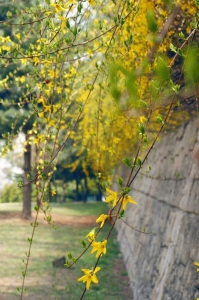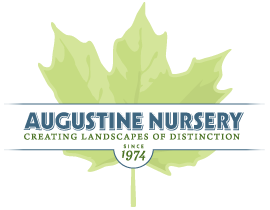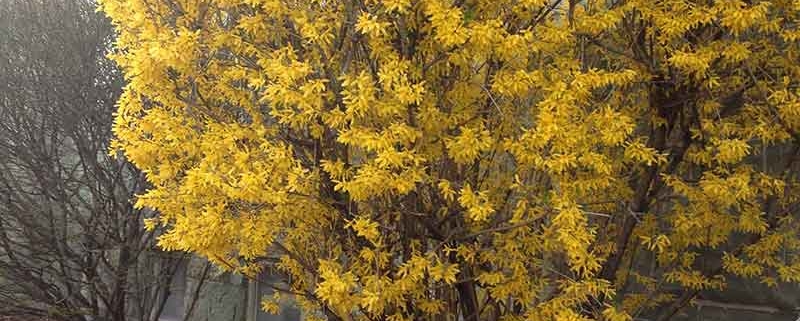Welcoming Spring with Fabulous Forsythia
While most modern homeowners believe forsythia is too ubiquitous to plant in their yard, it really is a bright harbinger of spring at a time of year when spring is desperately needed. Among the first flowers to bloom, they provide a joyful bright appearance for several weeks leading up to Easter.
Their reputation suffers because they often appear gangly and weedy. But periodic pruning, done right after they bloom, will help shape this shrub, not only eliminating its unkempt appearance through summer, but right up to its next spring bloom. With a little care and attention, forsythia make a nice hedge whose leaves take on a beautiful deep red color in fall.
 A Few Forsythia Facts:
A Few Forsythia Facts:
- The shrub was discovered by William Forsyth, a Scottish botanist, and member of the Royal Horticultural Society.
- It is also known as the Easter tree.
- Forsythia also comes in a white variety. The white forsythia blooms a week or two earlier than the yellow variety.
- Forsythia blossoms are edible. A bit bitter, they add color to salads and make a cheery garnish.
- Forsythia buds are fully formed by autumn and can be easily forced indoors.
- Cuttings from a parent plant will root and grow after being simply stuck in the ground.
- They are deer resistant. Perfect for the Hudson Valley.
Forsythia are a tough breed indigenous to Asia. For those who like to tend to their gardens, pruning and shaping will allow you to tame this bright and cheerful shrub. And for those who prefer plantings that can take care of themselves, forsythia are perfectly happy to thrive without help as well.




